Kraków – Poland
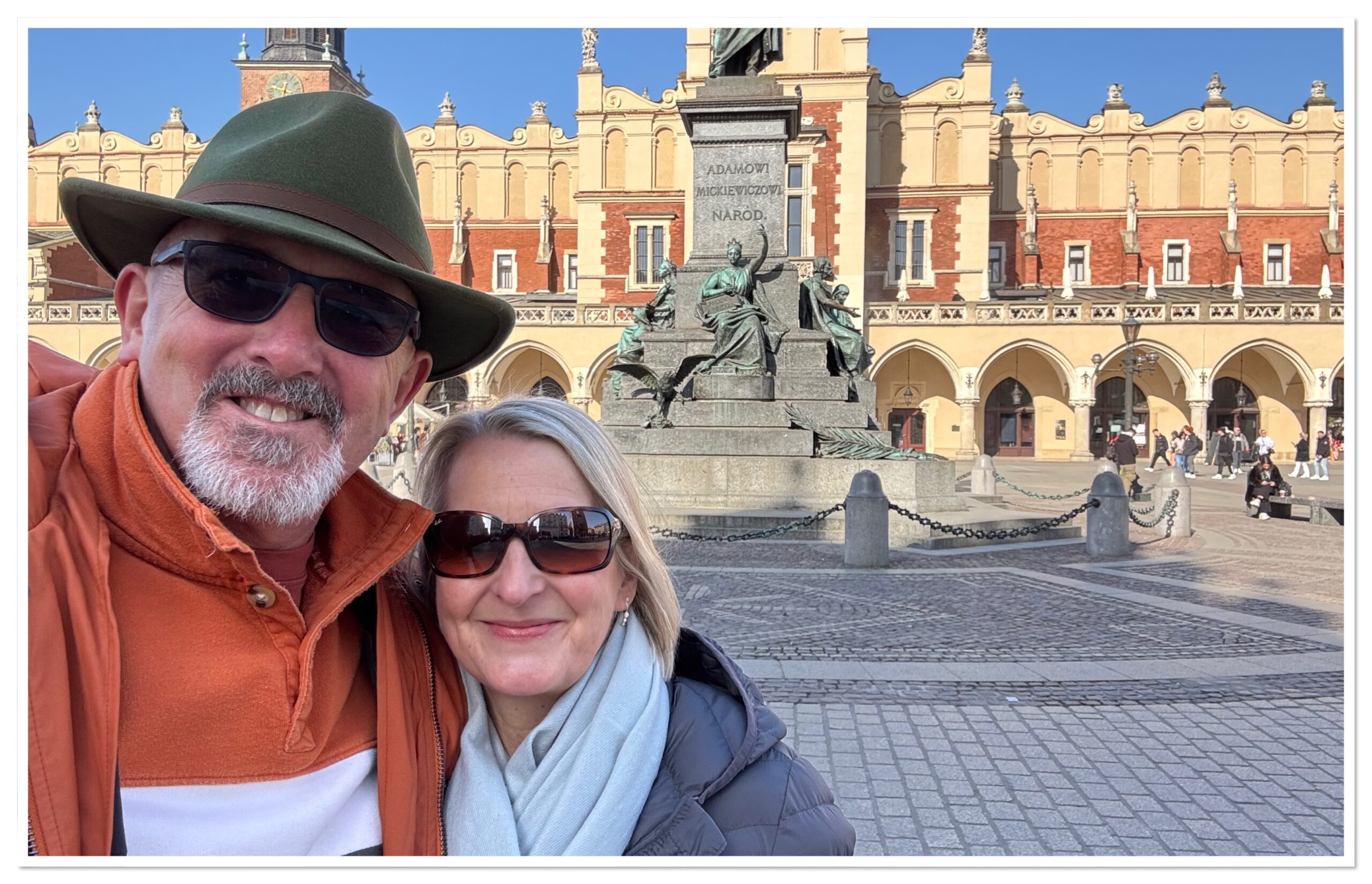
I really wasn’t sure what to expect when we booked this trip to Kraków; on the one hand it has all of the wonderful sights stunning architecture and vibrant night life I expected whilst, on the other, it is alarmingly close to the epicentre of some of Europe’s darkest moments in history.
It was because of the stark contrast I considered writing two travel blogs; I felt a little uncomfortable about sharing moments of happiness and joy amongst some of the saddest and most sobering moments I’ve experienced on my travels so far.
However, I guess that’s what makes this region so unique. So here it is, all in one!
This trip was a real lesson in history and the triumph of good over evil – sadly the ominous dark clouds on the horizon make it all the more poignant.
Our flights to Kraków were ridiculously cheap, costing us £18 each per flight (including baggage). Our accommodation was great value too, but more of that at the end in the usual hints and tips section at the end.
Kraków
Old Town and Rynek Glowny
Our accommodation was a clean and tidy apartment located on the outskirts of the Old Town, a short stone’s throw from a covered market called Stary Kleparz, which in turn is about a two minute walk from the Barbakan (bottom left).
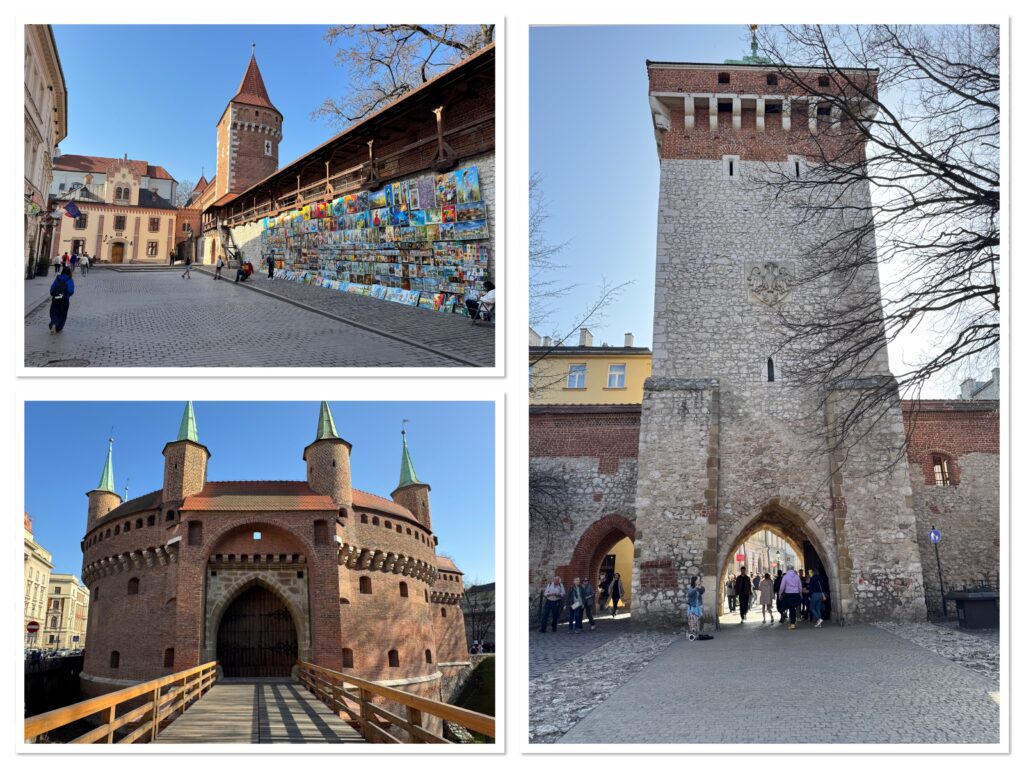
There is a great specialist coffee shop called Kawiarnia at the southern end of the market that we visited most days and recommend.
From the Barbakan we entered the Old Town via the 14th century St. Florian’s Gate, built to allow access through the medieval defensive walls. From here, we spent a few days simply wearing out shoe leather on the cobblestones, and with a piercing blue sky, enjoyed taking in the sights and sounds of this historical city.
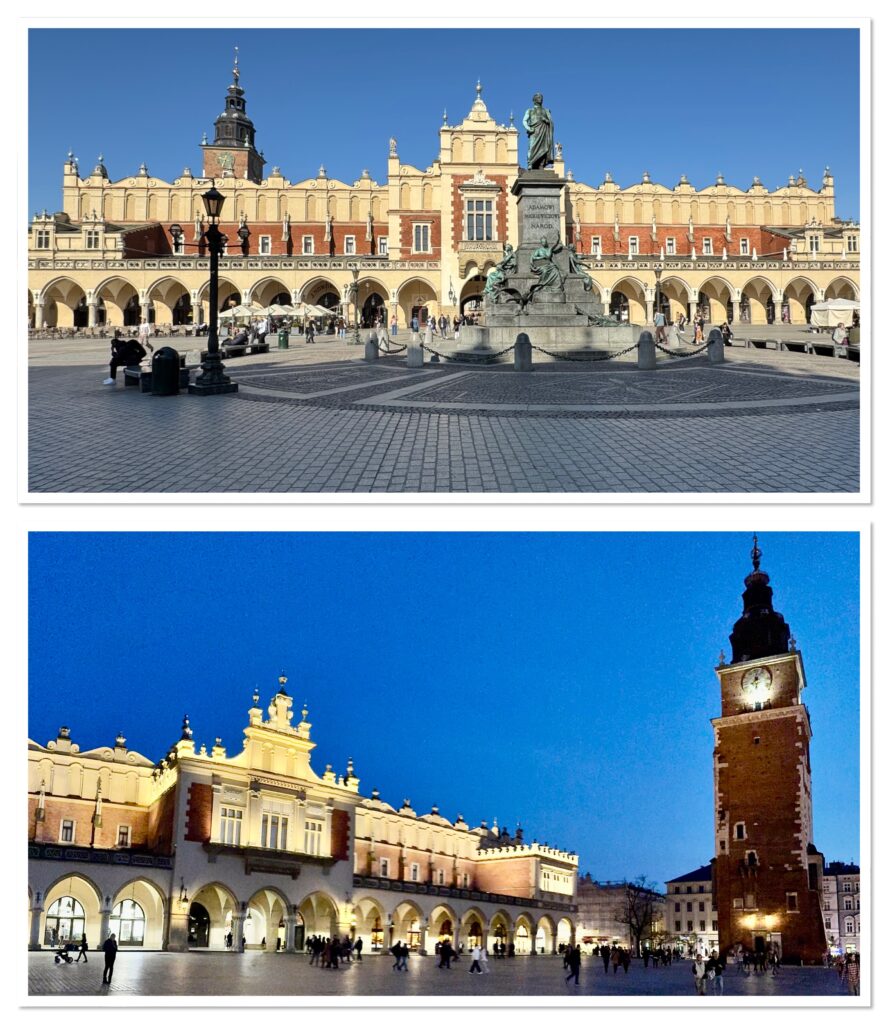
The main square at Rynek Glowny is huge, just huge. The Cloth Hall in the centre of the square is unmistakable, recognised as being one of the worlds oldest shopping malls.
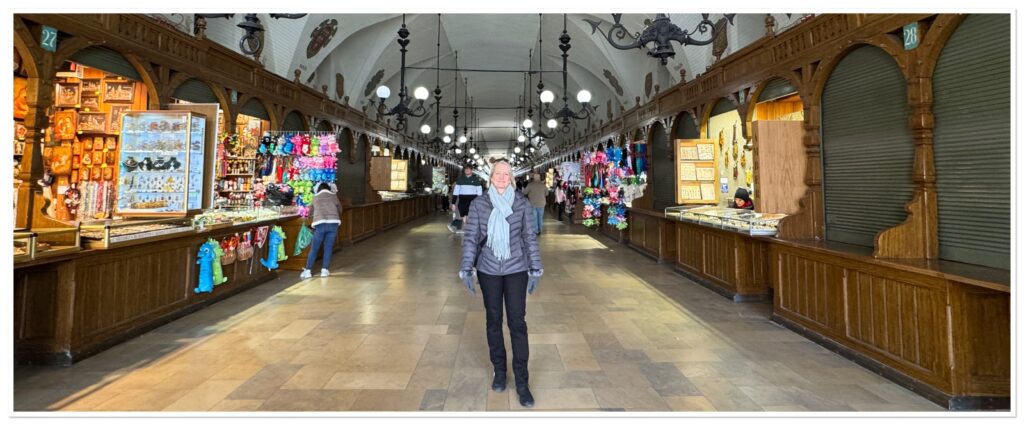
The only other building within the square is the imposing Town Hall Tower.
To the north of the square is the Kosciol Mariachi (Church of the Virgin Mary), which is as spectacular as they get.
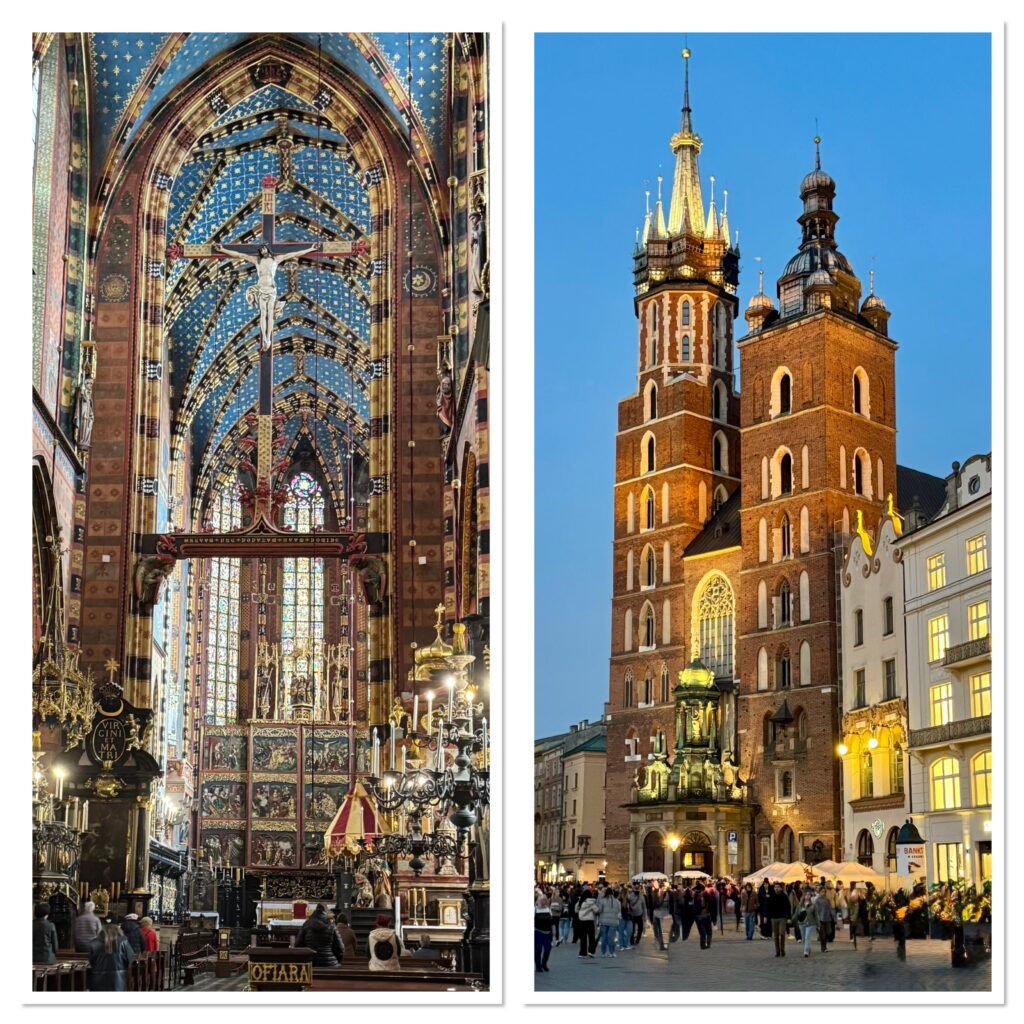
Much of the Old Town is pedestrianised, with cobblestone roads and multiple paved squares; these are intersected by tramways and the occasional road for cars. This time of the year we had lots of elbow room but I should imagine this area gets very busy in summer.
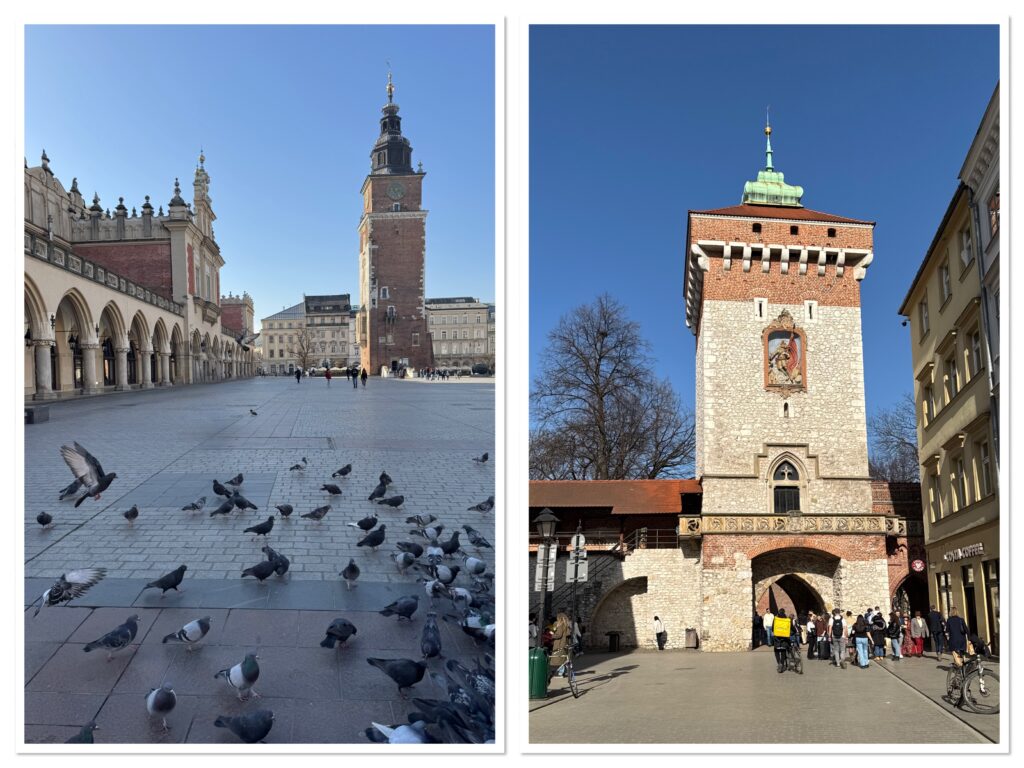
The old town has lots of nooks and crannies to explore, both inside and out.
It was also a great place to try out some of the local polish food – we tried out dumplings and stew in bread roll!
Emma bought a new hat from a side street trader who’s been established in the same little corner for decades and is now in her mid eighties, not a word of English or Polish was spoken, but lots of giggling was had between the pair of them!
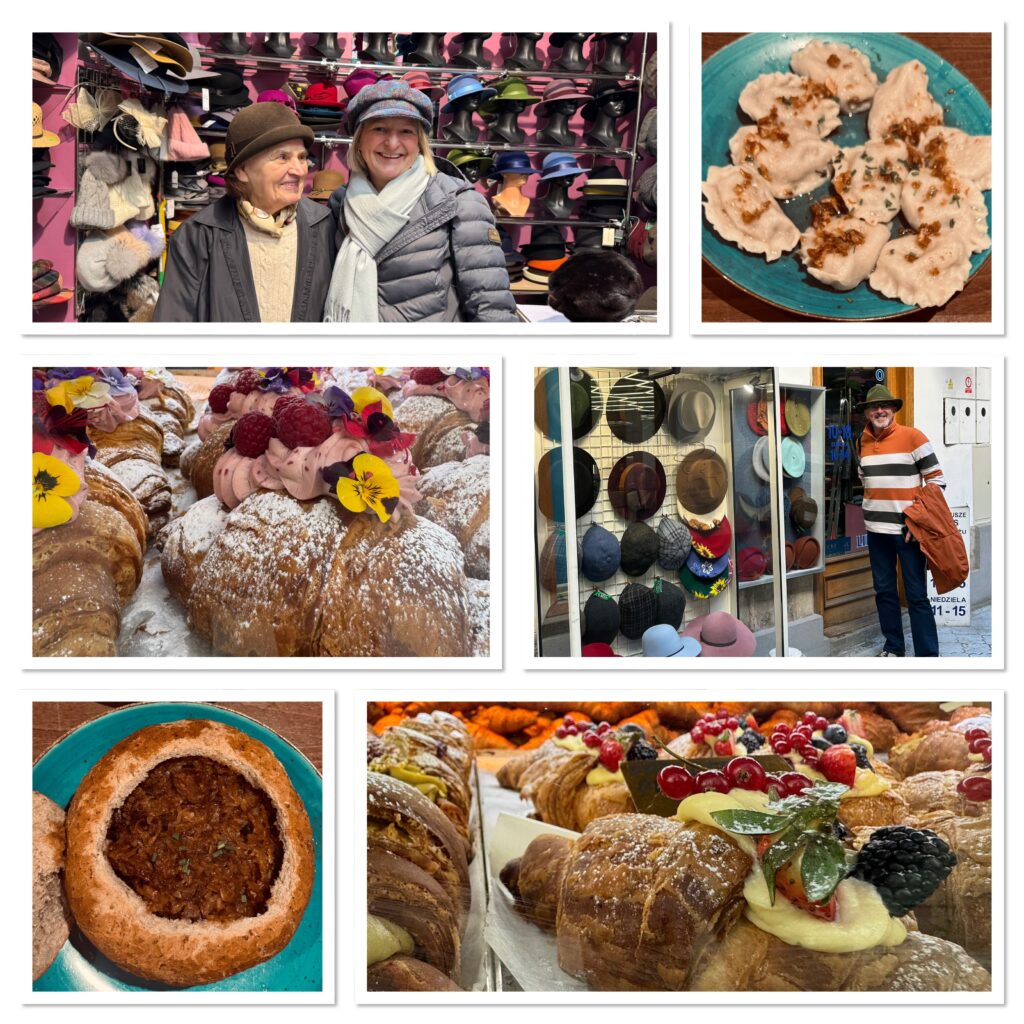
With temperatures in the high teens, the vibe in the city was great. There was a definite feeling that Spring is just around the corner. Tourists were in short sleeves with many counting their blessings.
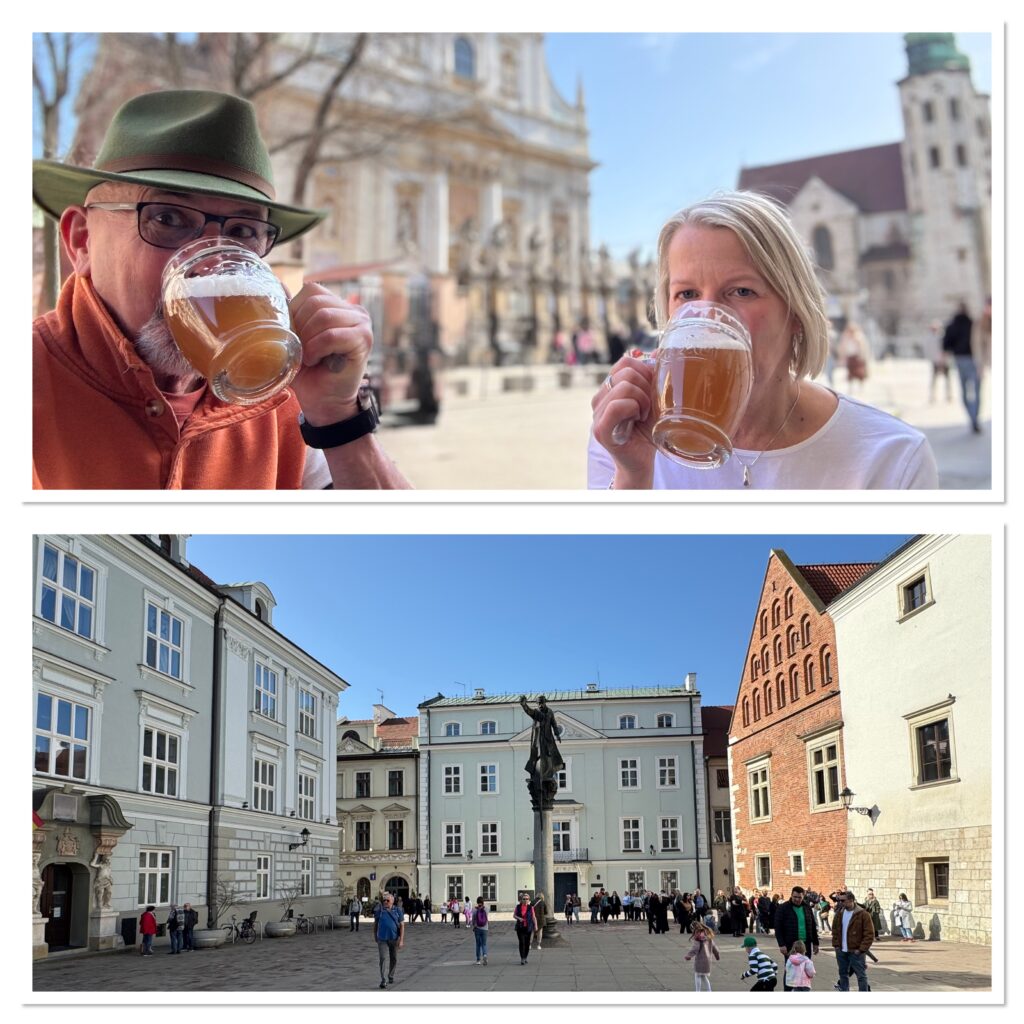
Bars and Nightlife
The place has sooooo many bars to choose from, either lining the main streets, or more discreetly at the end of alleyways, where a subterranean world exists underfoot.
Occasionally a sign or the sound of loud music would entice us to explore this bohemian underground world. Some signs grabbed our attention more than others (can’t think why this one did)….
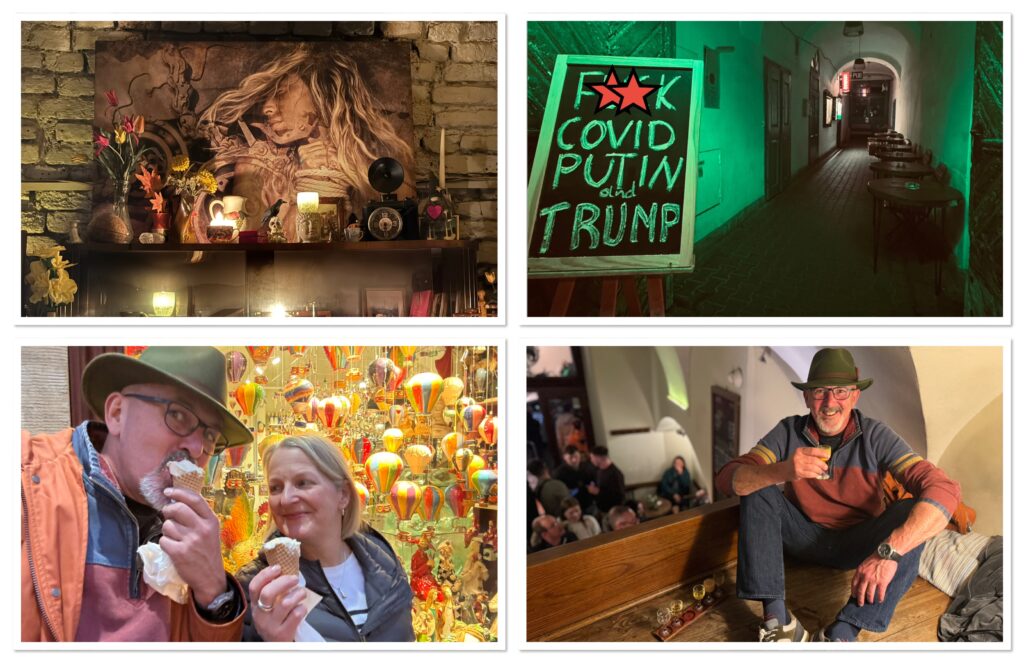
Emma’s favourite place was a tiny vodka bar (at Mikołajska 5) where you could try six shots for about £12. It has a rainbow of flavour options to chose from; needless to say, we had to come back for a second visit!
Oh and it wasn’t difficult to find bars with “happy hour” cocktails for £4 – well when in Rome!
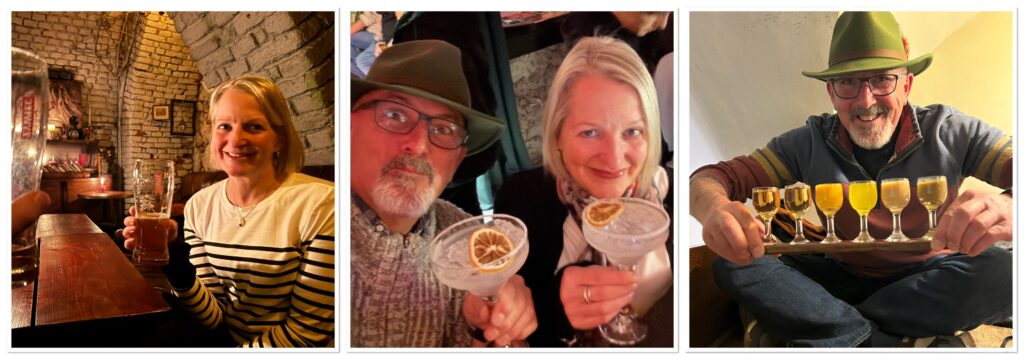

Each bar has a different theme, some with live music, others without, most of our favourites were underground.
Wawel Royal Castle
We spent two glorious days exploring this little quarter of the city. It has high ramparts, overlooking the river, approachable via steep ramps on all sides.
I’d strongly recommend buying a ticket to go inside the cathedral, it costs approx £5 and provides access to two other museums too.
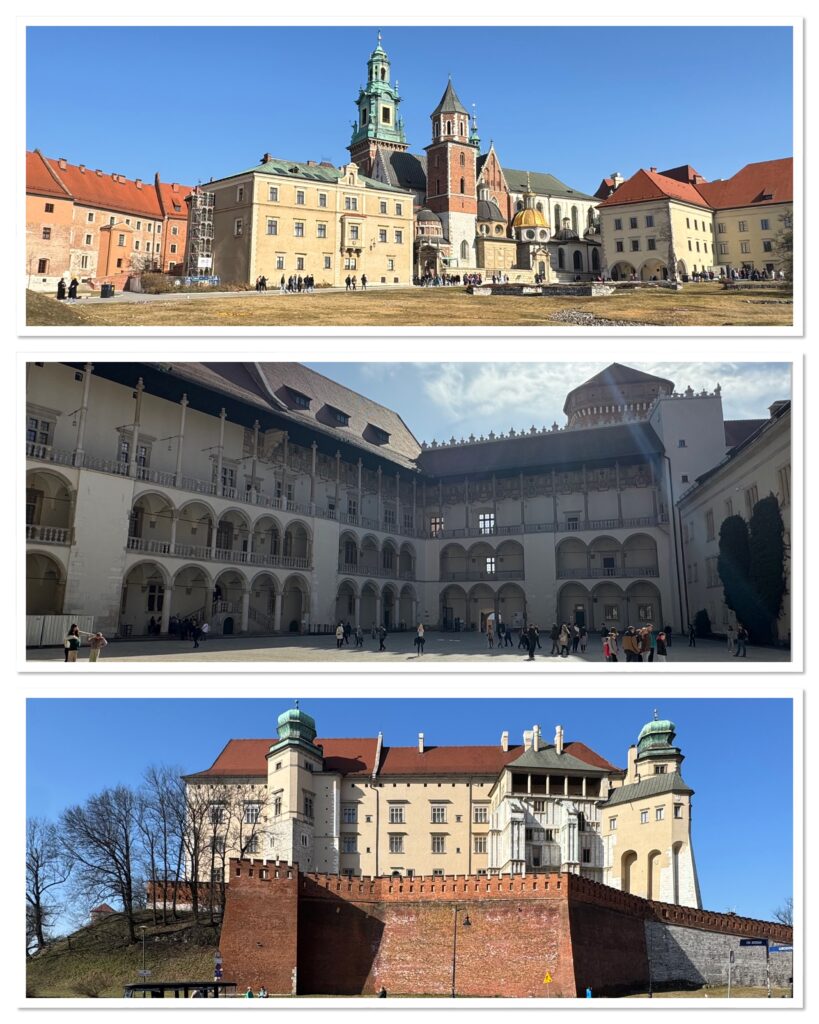
On the first day we enjoyed near perfect weather, so simply wandered the streets taking in the sights.
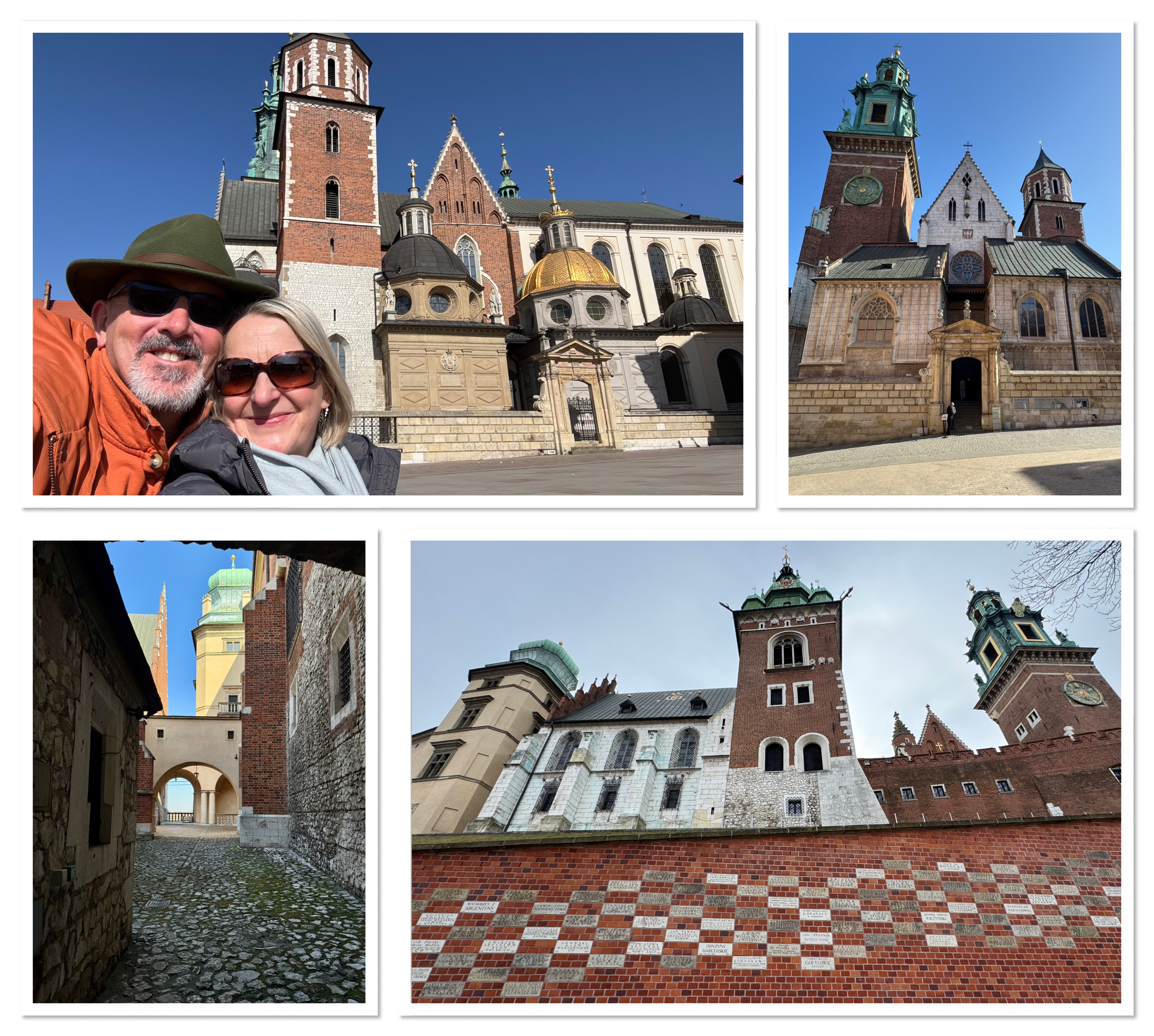
On our second visit we toured the inside of the cathedral and climbed the bell tower for an amazing view over the city. We also visited the crypt beneath, which was amazing and much larger than I expected. It has tombs, artefacts and interactive screens that provide the backstories of those who are resting here.
So many interesting fact that could have kept us busy for much longer.

Lunch on the River
As the weather was so gorgeous we wandered down to the river, where locals and tourists alike were hanging out on the grass banks enjoying the warmth of the sun. We noticed a river boat which was moored nearby and despite it looking a bit like a tourist trap, climbed on board. We were pleasantly surprised by both the great quality of food and small size of the bill.
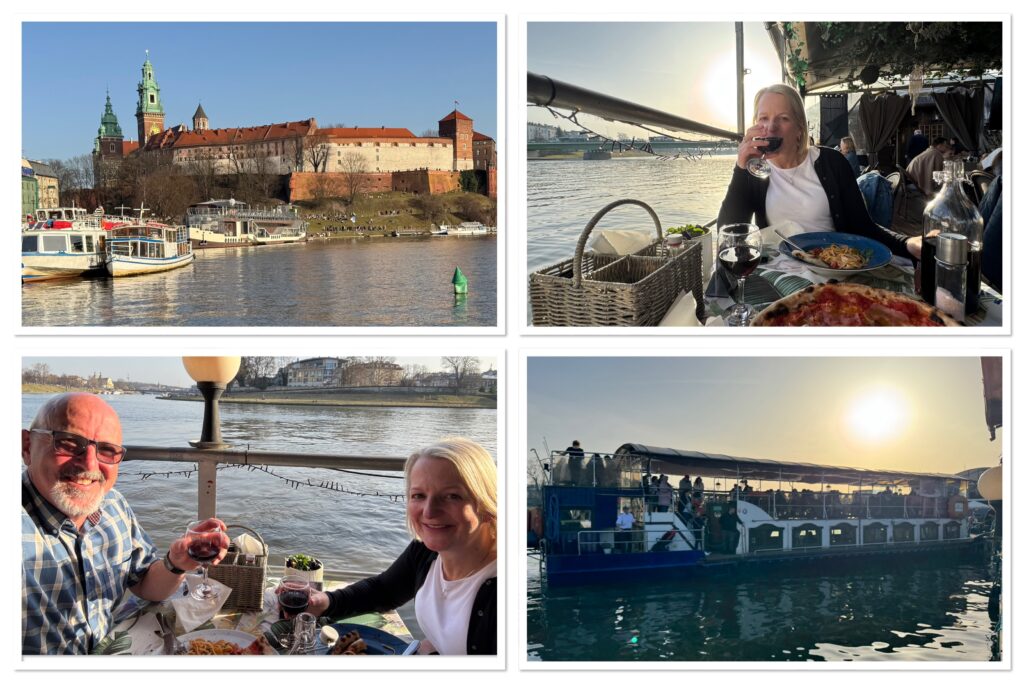
It felt more like a mild summer’s day than the beginning of March.

History lesson
We also spent an afternoon exploring a few of the smaller museums that have sprung up in recent years, one of which is to both commemorate and explain the history behind a local boy made good! “Karol Józef Wojtyła”, or Pope John Paul II as he later became known.
I am not religious, but found the museum incredibly interesting, particularly his life in the run up to WWII and role in the period when communism fell.
The other museum was much smaller in comparison and on a topic I personally found incredibly interesting. It celebrated the life of Father Jerzy Popiełuszko, who was murdered by the Służba Bezpieczeństwa — the Polish Security Service during the period of Soviet-backed Communist rule 40 years ago. His death occurred because of his involvement in the Solidarity movement, shortly after the period of marshal law ended in the early ’80’s.
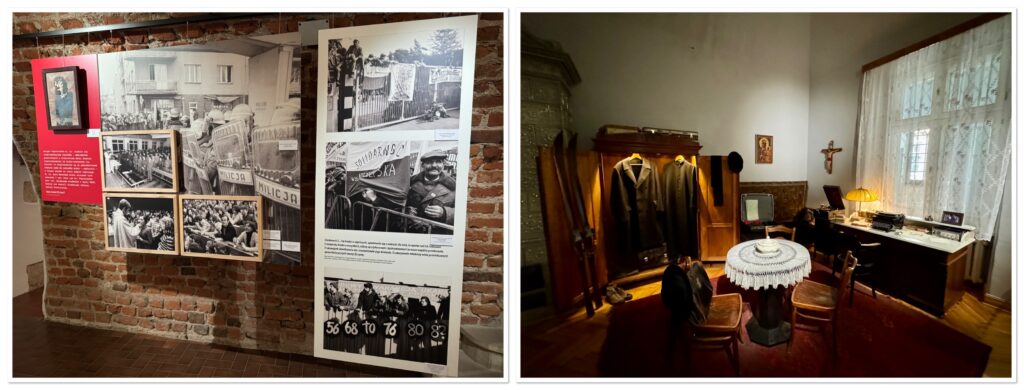
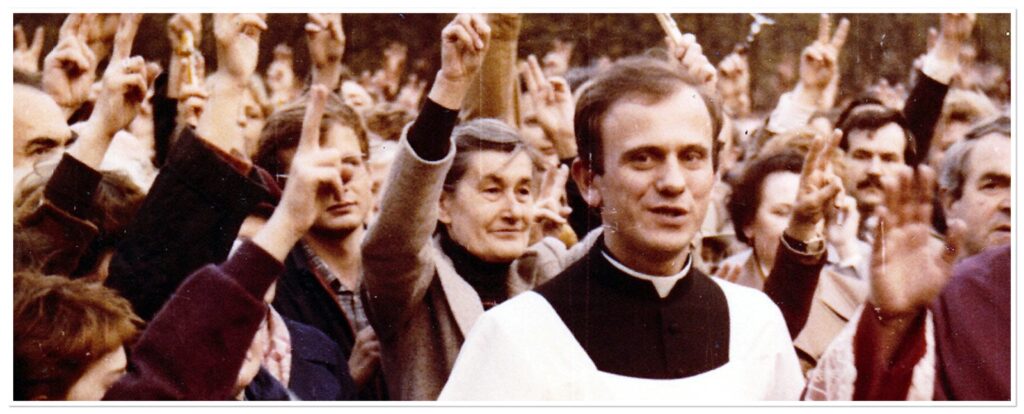
It transported me back to the days of Lech Walesa, a name that was constantly in the news when I was a teen, and who later became Poland’s first post communist elected president. Fascinating stuff and a timely reminder if ever I saw one of the mistrust this region has of most things Soviet and Russian.
I didn’t know that the Russian Soviets admitted to the massacre of around 20,000 Polish soldiers at Katyn in 1940 when the Nazis and Soviets were carving up the country at the start of the war. Those two nations inflicted even more pain in the years to come…
There is no denying that the Poles have been on the receiving end of some brutality from these two neighbouring countries, which might explain their staunch support for Ukraine.
Indeed, there is still a daily demonstration of Polish support of Ukraine which takes place in front of the Russian Consulate General in Krakow. We witnessed a small delegation on Saturday, along with quite a bit of anti Russian sentiment in a number of places.
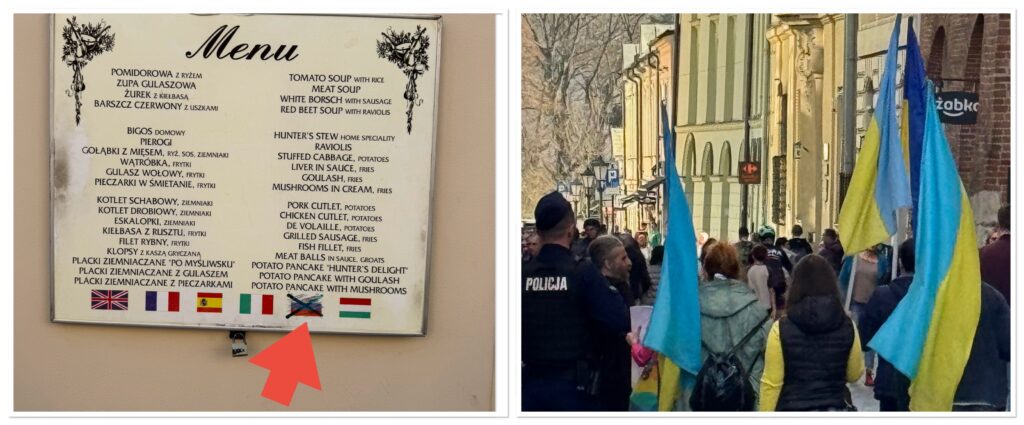
The Jewish Quarter, and WWII Ghetto
Given the history of this place, we spent quite a few hours researching the atrocities that took place towards Jews and other selected groups here during the Second World War by the occupying Nazi regime.
We visited the old Jewish Quarter, the last remaining fragment of the Ghetto wall, and the Ghetto Heroes Square where 33 large chairs are set out in neat rows, designed to reflect the way that the permanent residents of the ghetto had to stand during roll calls ahead of being deported, and to reflect the discarded furniture left behind by residents before their final departure to one of the many concentration camps.
If we come again, we will book a tour of Oskar Schindler’s factory, which we didn’t get to see on this visit, although we did walk to the factory.
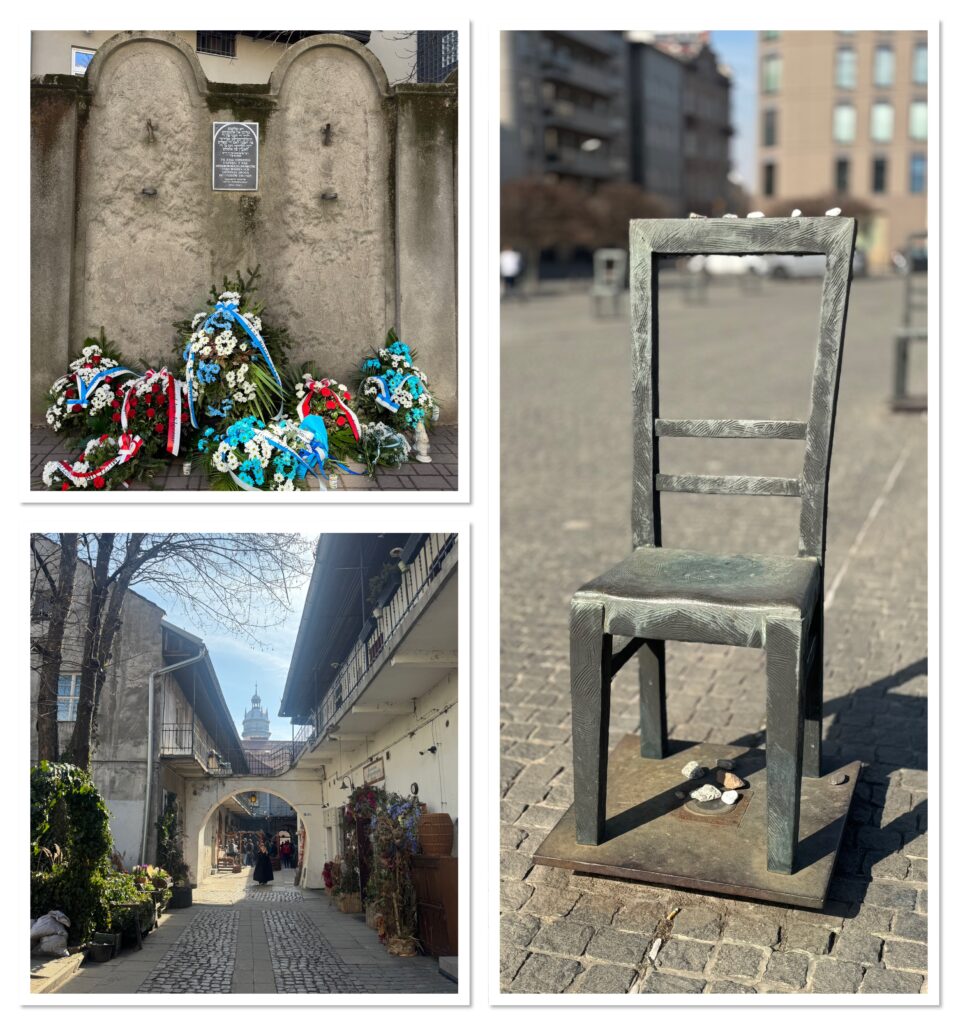
Reading about the plight of those left in the ghetto was an incredibly moving experience, but even more upsetting was our visit to the death camps at Auschwitz and Auschwitz-Birkenau on our penultimate day.
Auschwitz and Auschwitz-Birkenau
Auschwitz-Birkenau
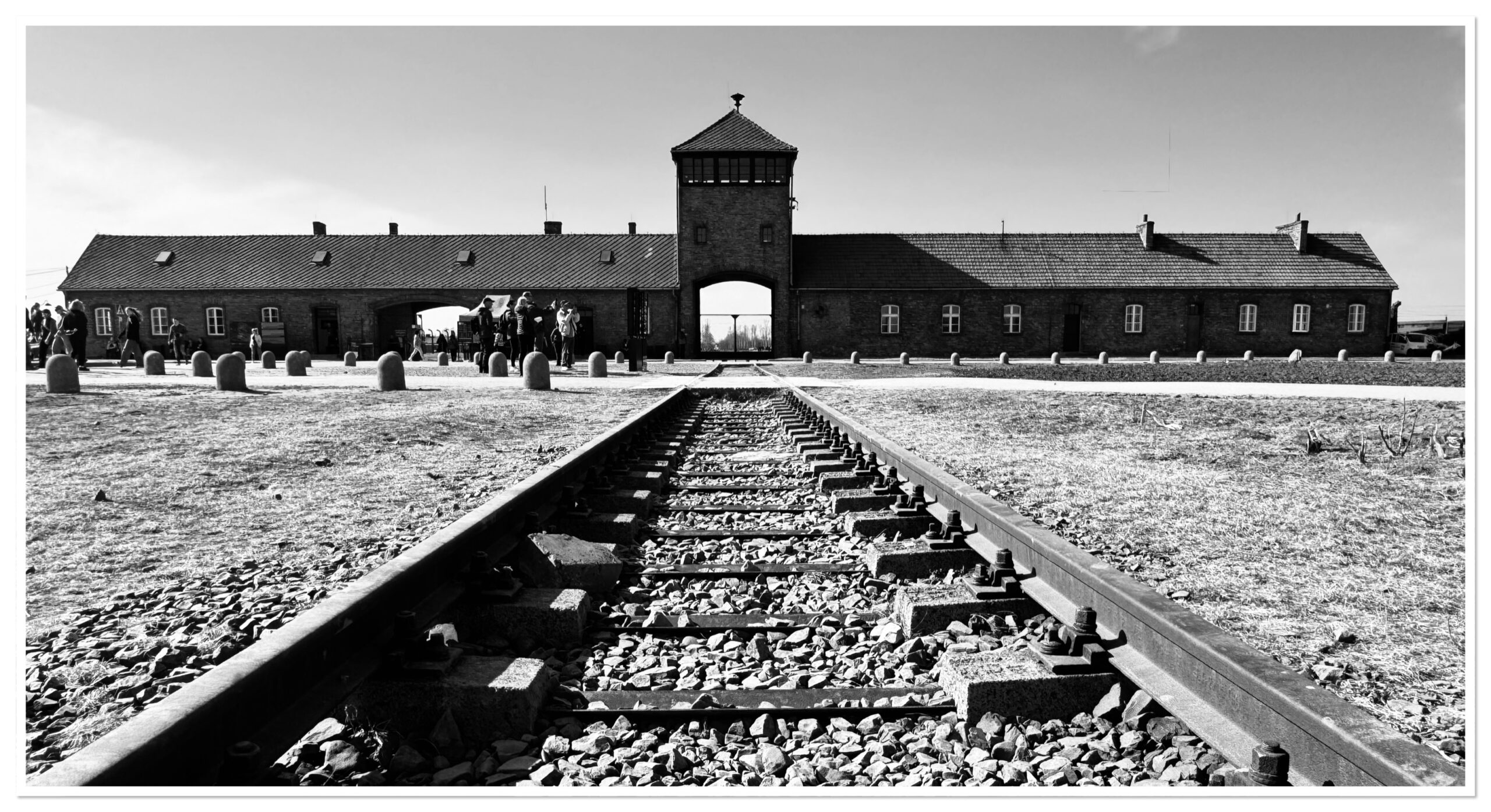
We purchased a “self guided tour” of Auschwitz-Birkenau and were dropped off at the main gate for a period of two hours. We had a very informative guide book, and a rough plan for the route we’d take.
Whilst I “thought” I knew what to expect, I really wasn’t prepared for the scale of the place. It is massive, something that took me a bit by surprise.
This site does not have much in the way of information, just a few notice boards located at strategic points around the site. Auschwitz-Birkenau has been painstakingly preserved to reflect what it looked like when it was operating as a Nazi concentration and extermination camp. Hauntingly eerie.
Often alone, and in absolute silence, Emma and I walked the exact route that so many families were marched to their murder, where they were gassed and incinerated on an industrial scale, simply because they were ‘different’.
The old, the young, ill or infirm were simply led from the train tracks, along a road lined with barbed wire fences, toward the nearby woods to meet their demise, many believing up to this point they were simply being ‘resettled’.
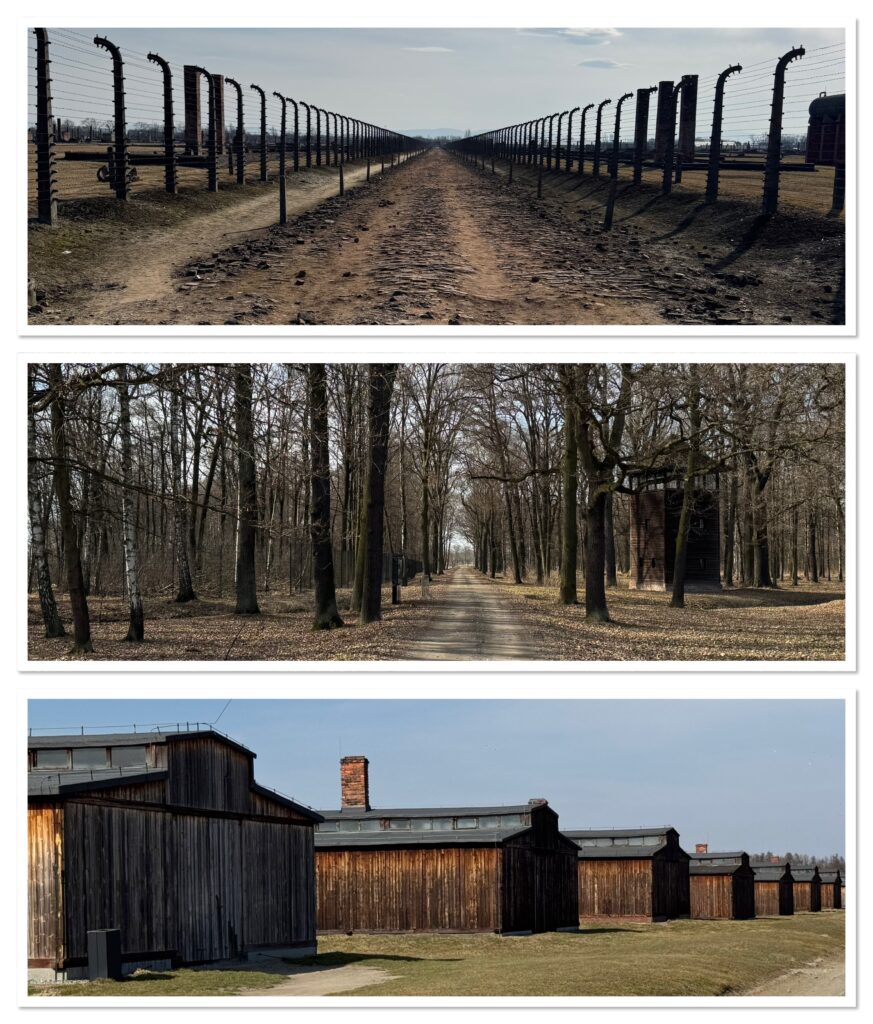

On a bright sunny day it was hard to comprehend the cruelty inflicted to so many defenceless people only 80 years or so ago.
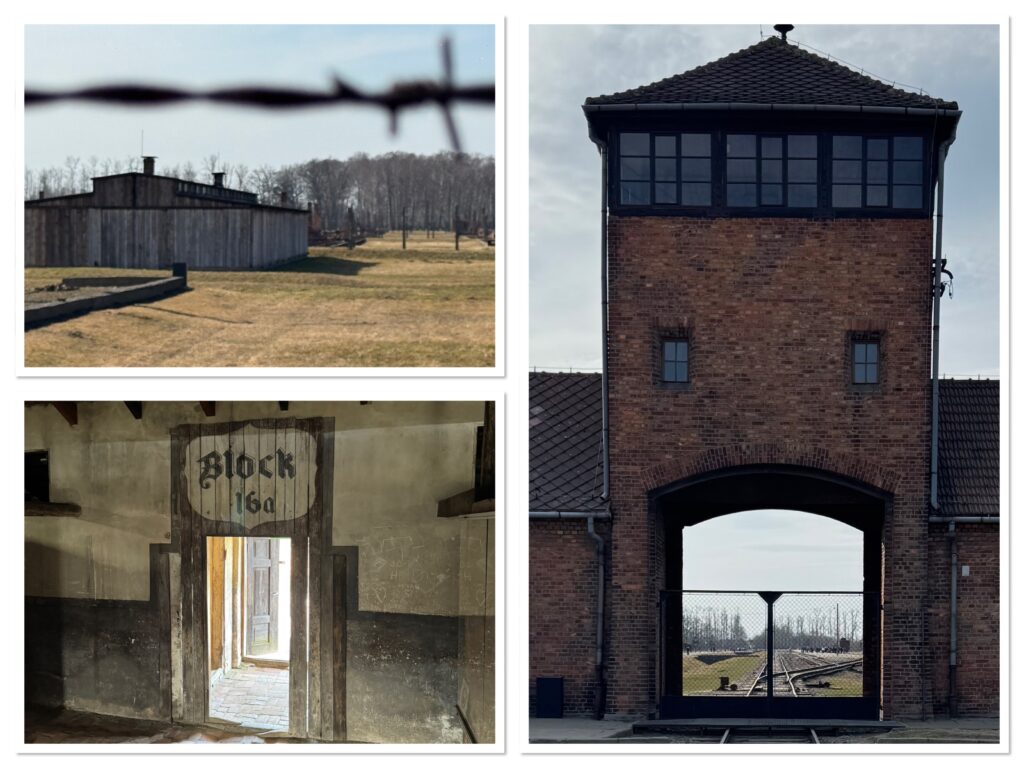
Words and pictures alone cannot adequately describe the feelings of disbelief, sympathy and disgust at what took place here.
The next stop on our tour simply amplified those feelings.
Auschwitz I – main camp
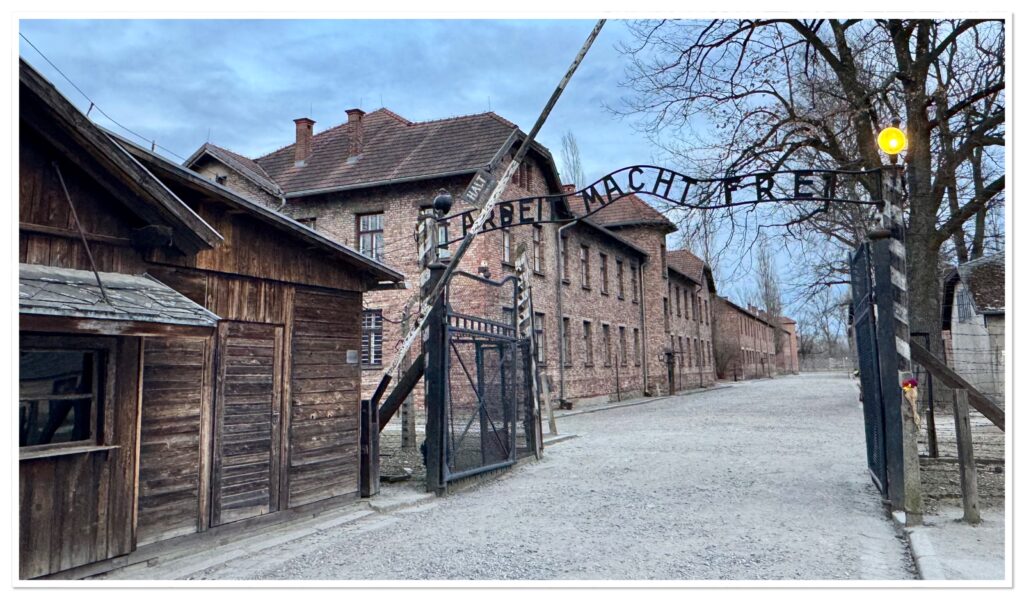
We arrived at the main camp towards the end of the day as light was fading and most of the larger tour groups had left. Whilst smaller, two hours just wasn’t long enough to take on board the full horror that took place here. This was designed to be more informative, with each facility having its own story to tell.
In many ways felt worse than Birkenau – far more personal. The faces and belongings of individuals were brought to life. It was also where Josef Mengele conducted his criminal medical experiments.
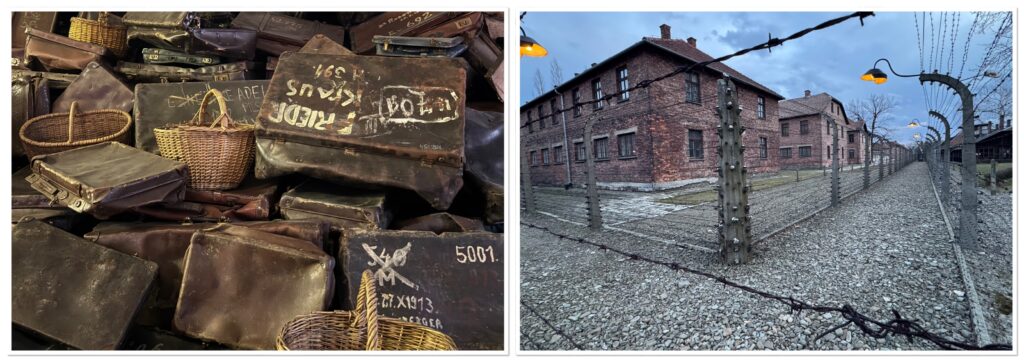
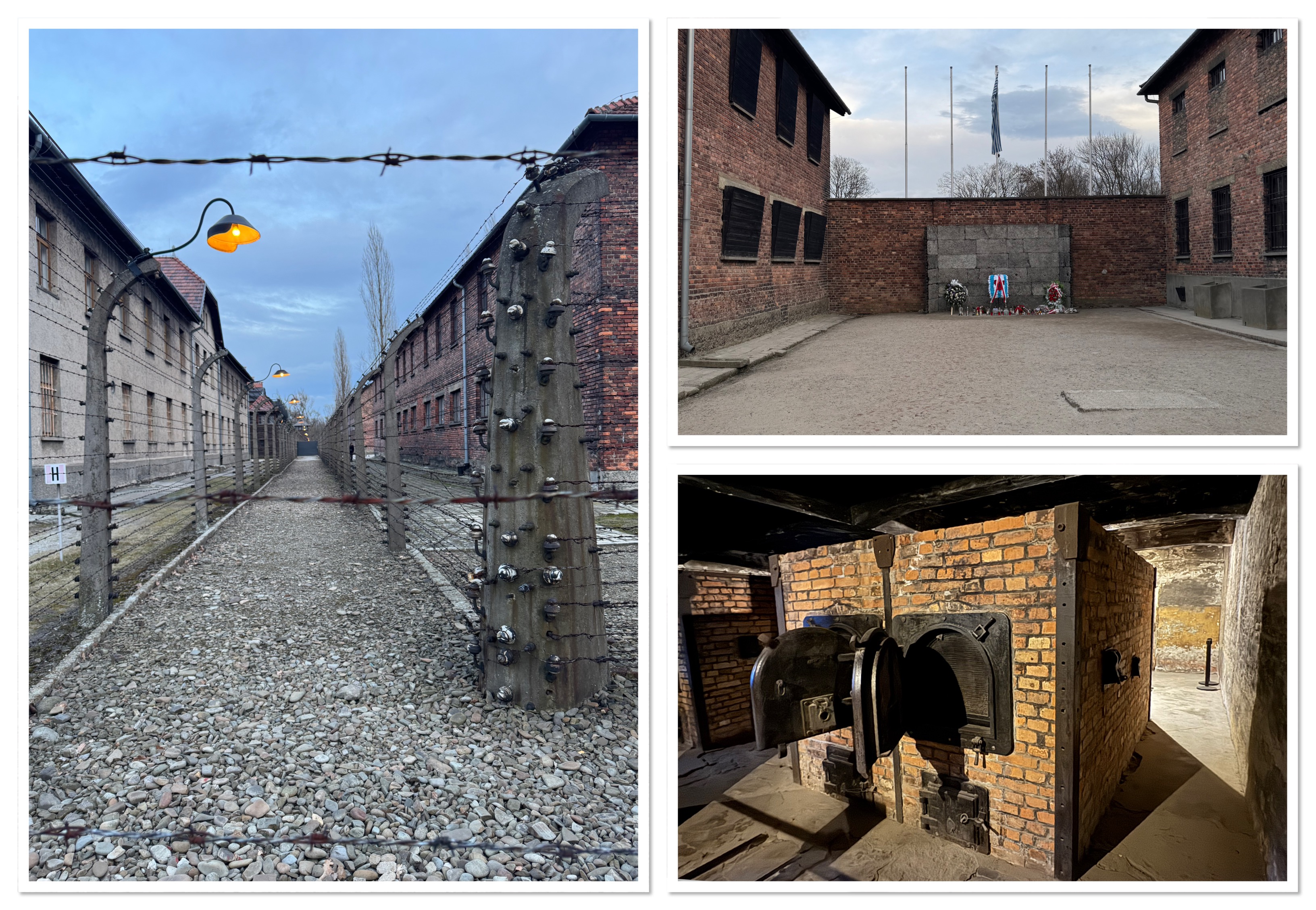
It really beggars belief that such cruelty could take place, so systematically, and over so long. Again, seeing it in person was so much more impactful than I had expected.
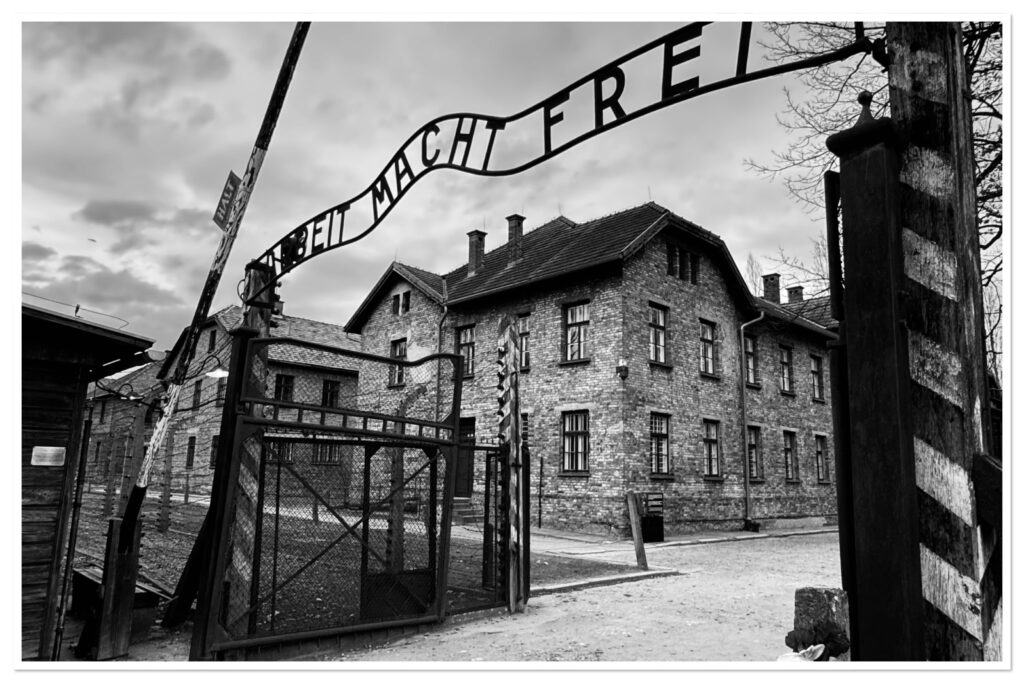
The journey back to Krakow was much quieter than the journey here.
This was a graphic reminder of one of the world’s darkest moments in history. It is something that should be maintained and shared, both in remembrance of those who perished, and to educate and prevent repetition.
The speed at which actions moved from insults to prejudice, and then onto mass murder on an industrial scale is simply frightening. And if people think this can’t happen again, they need only look at the numerous examples across the globe both before and after WWII.
Immunity from such horror is not guaranteed.
Examples of genocides and the use of concentration camps to murder specific groups of people, are more frequent than most of us care to believe. From the British Army, who first used concentration camp tactics at Pretoria and Bloemfontein, against Boer families and black Africans in the early 1900s, killing tens of thousands of women and children; to the plight of Palestinians today.
OK, I get there are complex back stories to these two specific examples, but there are countless more examples of genocide over the past 100 years, and from all over the globe (Bosnia, Myanmar, Darfur & Sudan, Rohingya, Cambodia, Timor, Bangladesh, Rwanda, Darfur, Syria and Iraq – sadly too many to list them all). The net result amounts to the same… the mass murder of innocents, (often entire families) based purely on ethnicity, race, religion, nationality – or just because they were different.
Summary
Kraków is a beautiful city which I’d certainly recommend for a long weekend. It’s full of wonderful buildings, has a great vibe and some amazing history.
Auschwitz is one of those places that should be on everyone’s list of places to visit. It so much more impactful in person than reading about it or seeing it on a documentary. However, I’d leave the latter for the last day, as it will understandably lower your spirits, or interrupt your sleep.
Hints and Tips
Flights – £18 per person per flight. We flew via Wizz for a silly price again. See Travel Hack.
Accommodation – Bubble Apartments (NOT the hostel which is nearby) £22 per person per night including cooked breakfast brought to your door bang on the time you ordered it.

Transport – download the BOLT app before you get here. The price of BOLT cabs is a small fraction of the airport taxi service, or pre ordering a taxi via Booking websites. Works like Uber. Card payments only. Oh and you can only tip the driver up to 15 minutes after drop off.
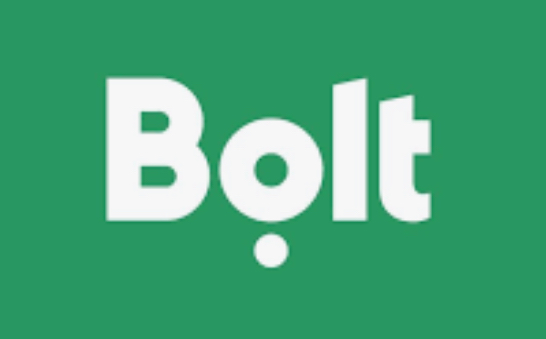
Airport Lounge.

We started our journey at Gatwick, watching the sunset from the airport lounge and, after a meal and a few glasses of wine, we headed off to Kraków for a midnight arrival. we ended it with a trip to Kraków’s airport lounge too.
See travel-hack page for tips on how to get into airport lounges for next to nothing.
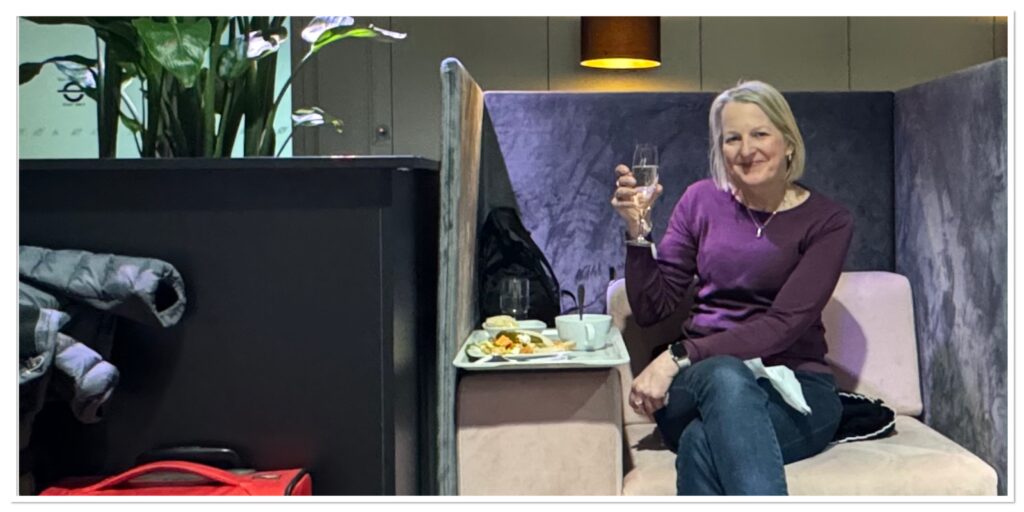
Your blog on Auschwitz was very interesting and powerful . My son who is deeply into history and been studying this at school had previously asked to visit. He is coming upto 15 and was not sure if I should visit and if he is too young,. However, if not now over the next year I think I will and. Your travel tips are amazing. Thank you